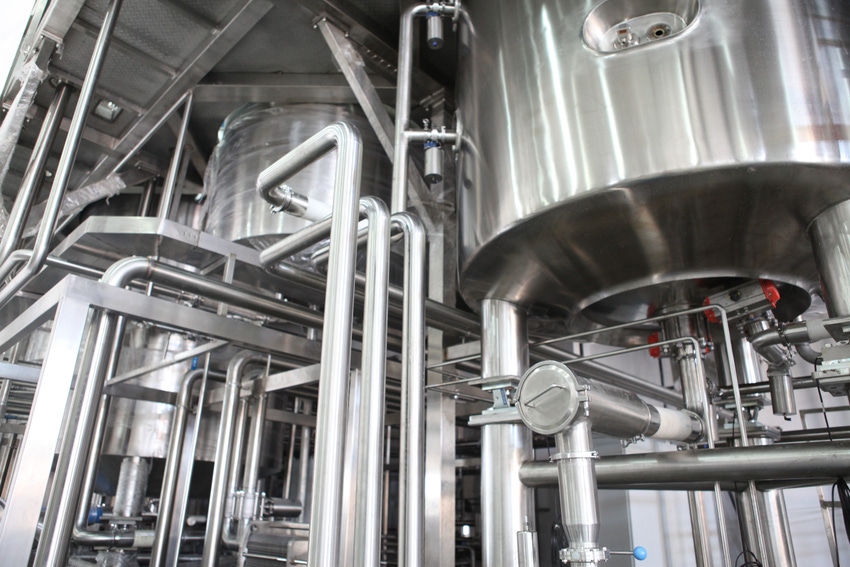Should Your Industrial Plant Rent or Purchase Compressed Air Equipment?
Adding equipment to your growing business isn’t a decision you can make lightly—especially if you rely on compressed air to get your work done. But when does it make more sense to rent than to buy?
September 11, 2018

|
(Image source: Crystal Kwok on Unsplash) |
The idea of renting compressed air equipment is catching on quickly. In fact, industry research released by Technavio says the global compressor rental market is expected to generate approximately $4 billion USD by 2020. Here's a quick rundown of the upsides and downsides of renting versus buying:
Buying
There are some basic questions you can ask yourself right away as you determine whether buying equipment is the right choice for you:
Will this equipment serve one purpose or are there other opportunities in my facility that could benefit from it as well?
Do I have large-scale capacity requirements that smaller rental units won’t be able to provide?
Does my facility have the space to accommodate an integrated or permanent unit versus a rental?
If you keep thinking of uses for your compressed air equipment and don’t want to juggle one machine between several applications, buying probably makes sense. The same holds true if your operation is sufficiently large-scale, so that smaller rental units won’t meet your requirements.
Ongoing maintenance is one of the downsides of purchasing compressed air equipment outright. We’ll talk more about that momentarily. For now, just know that compressors can be complex systems that often require the proper resources and know-how to keep running smoothly. This disadvantage of buying is actually an upside of renting, as many rental outfits will include, or offer as an option, regular maintenance plans. As a result, you don’t have to commit resources of your own.
Renting
Arguably the biggest advantage of renting equipment is that it’s possible to return the item if you find it’s not quite what you were expecting or doesn’t satisfy your capacity or space requirements. That’s not to say it’s impossible to return something you purchased, but consider this:
Renting equipment first—with the intention to purchase it permanently if it works out or return it if it does not—lets you trial-run new technologies, workflows, and ways of performing your work before making a potentially permanent or inconvenient decision.
You want to think about emergency situations too. Renting lets you respond to sudden equipment failures very quickly, without losing capacity and without the time pressures associated with choosing a permanent replacement for the failed machine.
You’ll discover a similar advantage when it comes time for your annual peaks in productivity and demands on your machines. Renting is an attractive alternative when you anticipate a heavier workload for just a few weeks or months out of the year.
As far as maintenance goes, depending on how well you shop around, renting might deliver a bonus here as well. Renting equipment from a reliable provider often includes options for product support, maintenance, and of course, advice on future expansion.
Ongoing maintenance plans included in rentals can save you tons of potential headaches. Think about the time you’ll save if you don’t have to worry about: cleaning or replacing air filters and other “wear parts” on a regular basis; inspecting intakes for debris and looking for pressure drops throughout the line; finding instances of “artificial demand” in your system and making changes to eliminate wasted effort; reevaluating system capacity as your needs change and your business grows, and finding suitable alternatives or workarounds.
RELATED ARTICLES:
It probably sounds like, on the balance, renting equipment makes the most sense. That’s probably true for all but the most established companies, which have already made significant investments in their facilities and infrastructure or already have knowledgeable parties in-house for installation and maintenance.
So, Should I Buy or Rent?
We briefly discussed know-how above, but it makes sense to mention it again. The technology behind compressed air equipment isn’t difficult to understand in concept. But even facility managers who think they know it well end up making these common mistakes:
Compressed air is not always the most efficient source of energy for industrial plants, but is commonly used anyway, resulting in wasted money and energy.
Compressed air equipment, even when brand new, won’t deliver optimal results if the equipment is poorly matched to the process.
Compressed air is a resource that can be managed like any other. But it is often not viewed that way by facility owners with a “set and forget” mindset.
If you have an in-house team with the experience necessary to maintain compressed air equipment permanently within your facilities—and that understands the sometimes delicate balance of supply and demand that this energy source requires—you’re in a great position to shop around and make a purchase with confidence.
On the other hand, if you’re strapped for cash or your business is still finding solid footing as you scale up, consider rental units. Even if you’ve identified compressed air as a sensible fit for your workflow, you don’t have to understand it fully yourself or even hire trained personnel to add it to your stable of equipment. Instead, expect the terms from a decent rental company to take some of the worries off your plate and let you focus on what you do best.
Megan Ray Nichols is a freelance technical writer and the editor of Schooled By Science. When she isn't writing, Megan enjoys going on hikes, stargazing, or finding a new book to read. You can follow Megan on Twitter, @ nicholsrmegan, or subscribe to her blog for the latest updates.
|
About the Author(s)
You May Also Like


.jpg?width=300&auto=webp&quality=80&disable=upscale)


